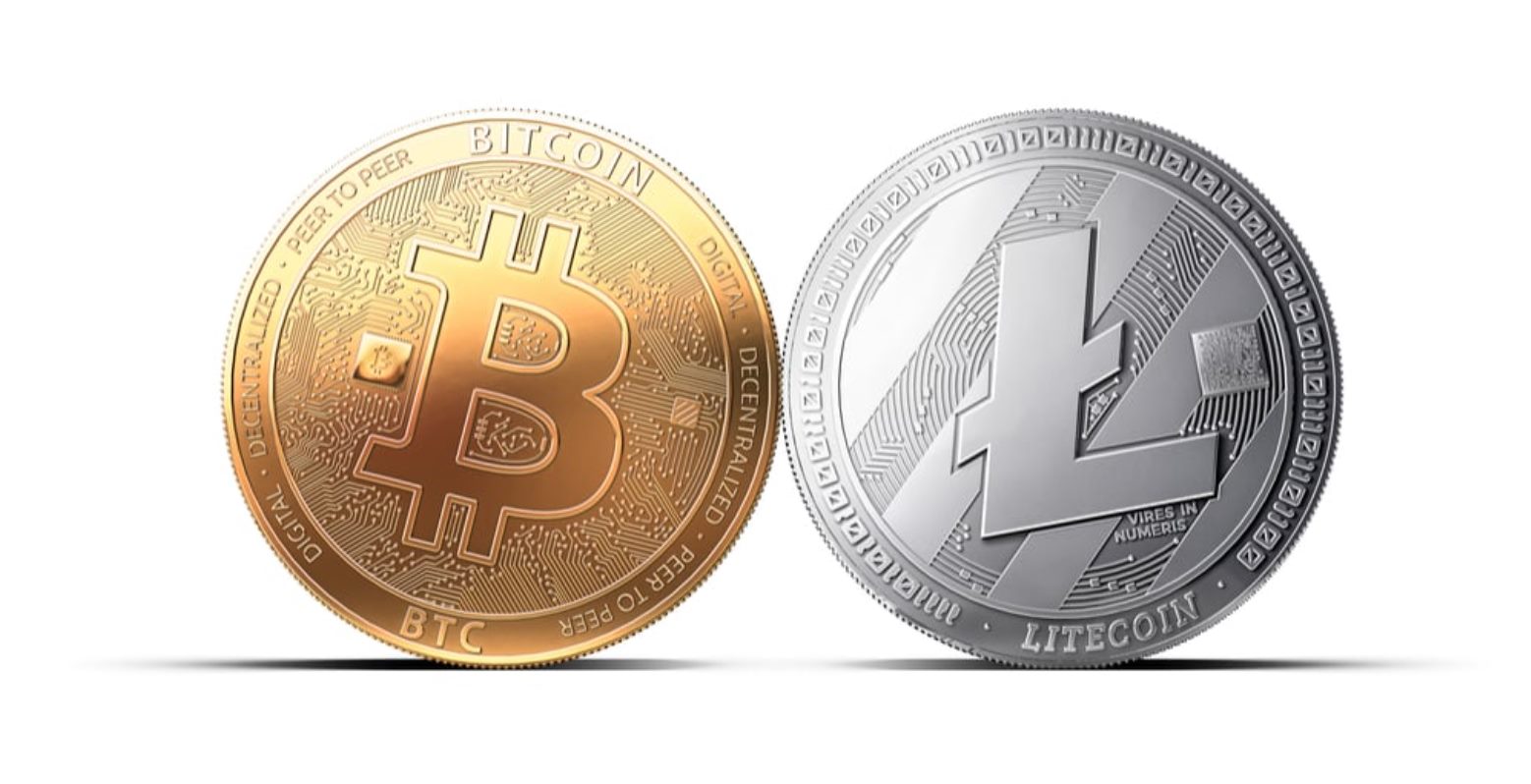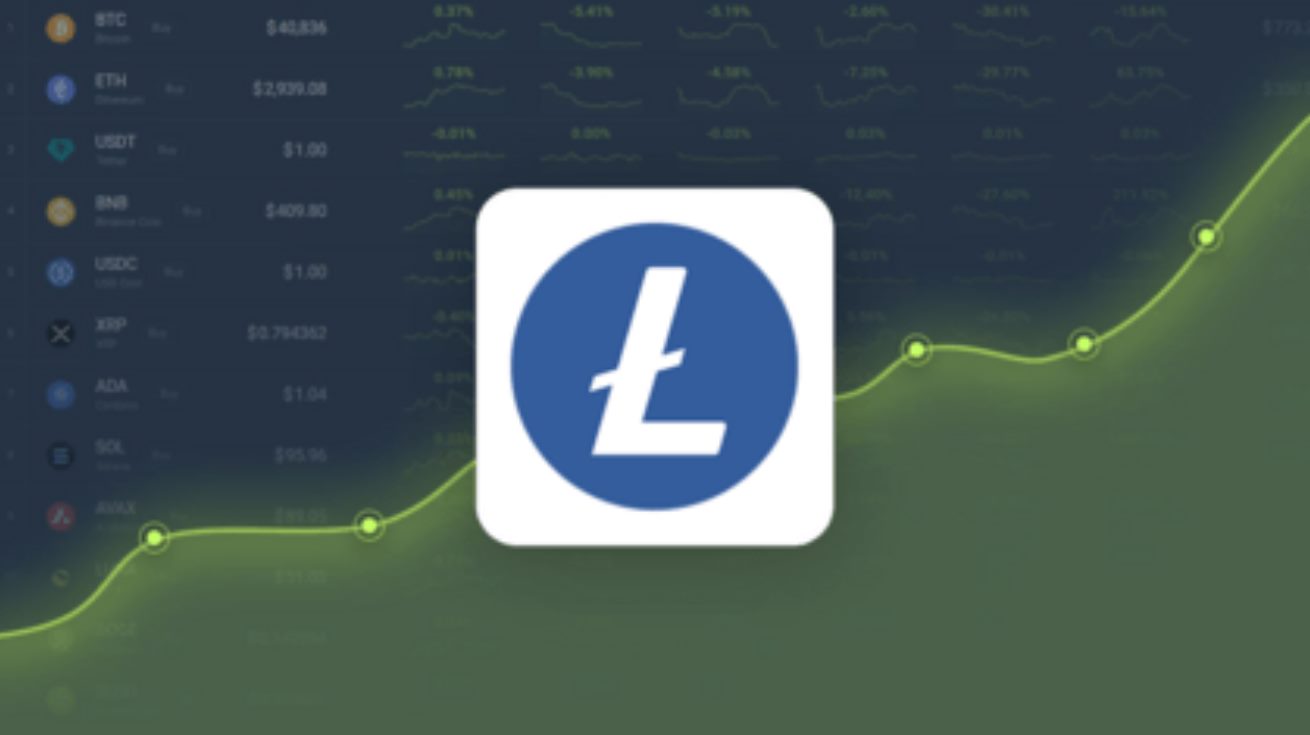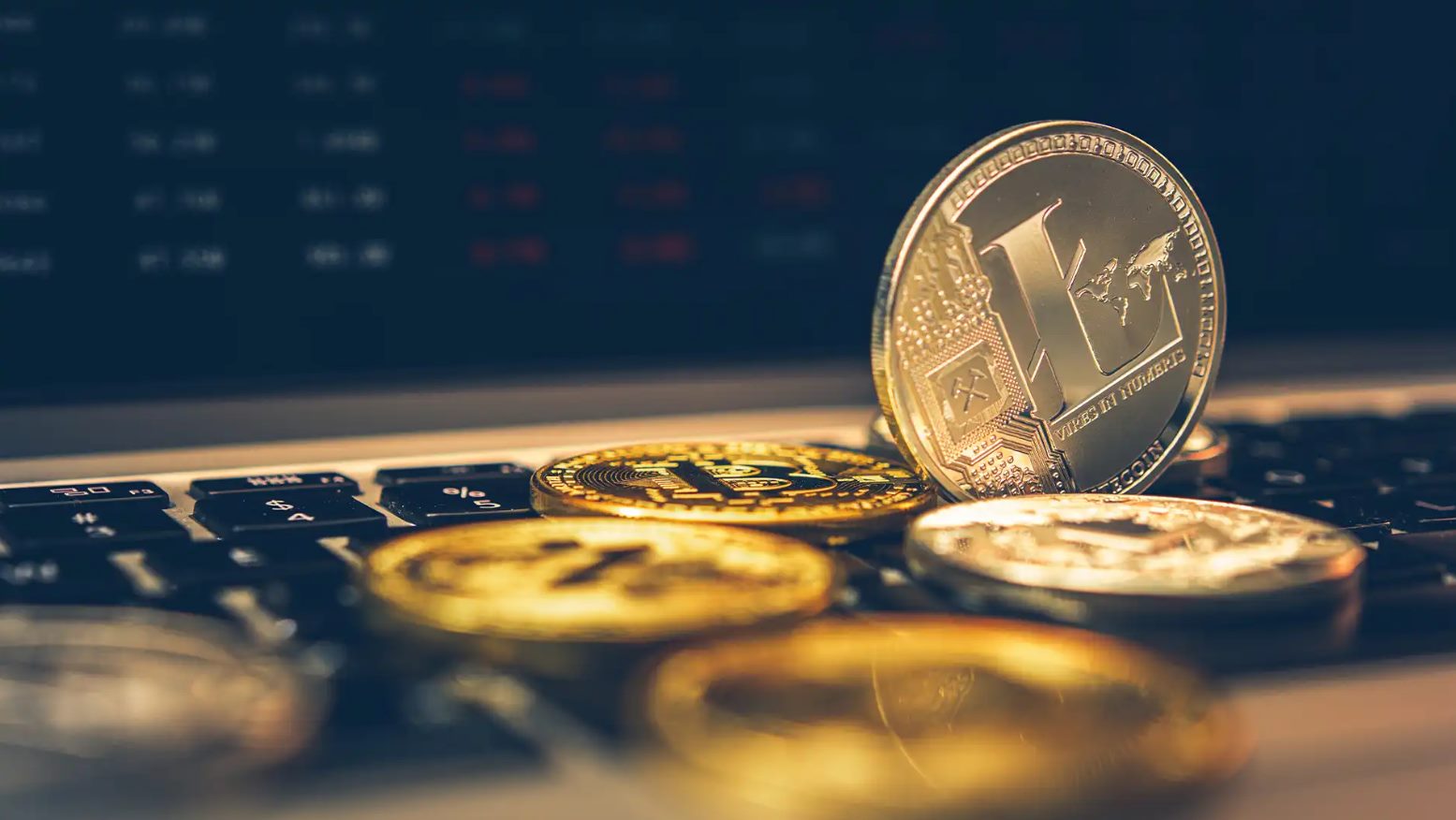Introduction
Welcome to our analysis of Litecoin’s potential price movement in the next year. As one of the largest and most established cryptocurrencies, Litecoin has garnered significant attention from investors and enthusiasts alike. With its fast transaction speed and lower fees compared to Bitcoin, Litecoin has positioned itself as a viable alternative for those seeking to participate in the world of digital currencies.
In this article, we will delve into the current state of Litecoin, explore the various factors that may influence its price, and examine predictions from industry experts. Furthermore, we will conduct a technical analysis of Litecoin’s price movement, identify potential opportunities and risks, and compare it with other cryptocurrencies.
Before we proceed, it is important to note that cryptocurrency markets are highly volatile and subject to rapid changes. The predictions and analysis presented here are based on current information and historical trends, but should not be taken as guaranteed outcomes. Always conduct your own research and consult with a financial advisor before making any investment decisions.
With that said, let’s begin by reviewing the current state of Litecoin and understanding its significance in the crypto market.
The Current State of Litecoin
Litecoin, created by Charlie Lee in 2011, is often referred to as the silver to Bitcoin’s gold. It has established itself as one of the most prominent cryptocurrencies, boasting a strong community and a market capitalization consistently ranking in the top ten.
At the time of writing, Litecoin has a circulating supply of over 66 million coins and a market capitalization of around $10 billion. It operates on a decentralized network and utilizes the Scrypt hashing algorithm, making it resistant to ASIC mining and promoting broader participation from the community.
Litecoin has gained popularity due to its faster block generation time of 2.5 minutes, compared to Bitcoin’s 10 minutes, resulting in quicker confirmation times for transactions. Additionally, Litecoin features a total supply of 84 million coins, four times that of Bitcoin’s.
One key factor that contributes to Litecoin’s appeal is its active development and continuous improvements. The Litecoin Foundation, led by Charlie Lee, oversees the development and promotion of the cryptocurrency. Upgrades such as Segregated Witness (SegWit) and the Lightning Network have been successfully implemented, enhancing transaction speed and scalability.
Litecoin has also gained recognition as a payment method, with numerous merchants and online platforms accepting it as a legitimate form of currency. This adoption has further solidified its position in the cryptocurrency ecosystem.
Despite its positive attributes, Litecoin faces competition from other digital currencies as the industry continues to evolve. However, its established reputation, strong community, and active development make it a significant player in the crypto market.
Now that we have examined the current state of Litecoin, let us explore the various factors that can influence its price in the coming year.
Factors Influencing the Price of Litecoin
The price of Litecoin, like any other cryptocurrency, is subject to a multitude of factors that can influence its value. Understanding these factors is crucial for predicting the future movement of Litecoin’s price. Here are some key factors worth considering:
Market Sentiment: The overall sentiment and perception of cryptocurrencies can have a significant impact on Litecoin’s price. Positive news, regulatory developments, or increased interest from institutional investors can drive up demand and subsequently increase the price.
Bitcoin’s Performance: As one of the leading cryptocurrencies, Litecoin often follows the price movements of Bitcoin. When Bitcoin experiences significant price movements, it often sets the tone for the wider cryptocurrency market, including Litecoin.
Technological Enhancements: Litecoin’s ongoing technological developments play a vital role in its long-term price outlook. Upgrades such as improved scalability, privacy features, or the implementation of new protocols can generate positive market sentiment and enhance Litecoin’s value.
Adoption and Partnerships: The level of adoption of Litecoin as a payment method and the formation of strategic partnerships can have a profound impact on its price. Increased acceptance by merchants and integration into popular platforms can create a higher demand for Litecoin and drive its value upwards.
Competition: The cryptocurrency market is highly competitive, with hundreds of cryptocurrencies vying for attention and investment. Litecoin’s price can be influenced by the performance and perceived value of other cryptocurrencies, particularly those with similar attributes or use cases.
Regulatory Environment: The regulatory landscape surrounding cryptocurrencies can significantly impact their prices. Positive regulatory developments that provide clarity and stability can boost confidence in cryptocurrencies, including Litecoin, and drive up demand.
Market Liquidity: The liquidity of a cryptocurrency indicates how easily it can be bought or sold without causing significant price fluctuations. Higher liquidity generally leads to more stable prices, while lower liquidity can result in increased volatility.
Macroeconomic Factors: Litecoin’s price can also be influenced by broader macroeconomic factors, such as inflation rates, geopolitical events, and global economic trends. Changes in these factors can influence investor sentiment and appetite for risk, consequently impacting the demand for cryptocurrencies like Litecoin.
These are just a few of the many factors that can impact the price of Litecoin. It is essential to consider a wide range of variables when predicting its future price movements.
Now that we have examined the factors that can influence Litecoin’s price, let us explore predictions from industry experts to gain further insights into its potential future value.
Predictions from Industry Experts
Industry experts and analysts have put forth a range of predictions regarding Litecoin’s potential price in the coming year. While it is important to approach these predictions with caution, they can offer valuable insights into the sentiment and expectations surrounding Litecoin. Here are some notable predictions:
Prediction 1: Some experts anticipate that Litecoin could experience significant price growth in the next year. They cite factors such as increased adoption, technological advancements, and continued market demand as drivers for this potential increase. These experts predict that Litecoin’s price could reach [insert predicted price range] within the next year.
Prediction 2: Other analysts take a more conservative approach, forecasting a more modest growth for Litecoin. They believe that while Litecoin may see some appreciation in value, its price will likely be influenced by the overall performance of the cryptocurrency market. These experts predict a price range of [insert predicted price range] by the end of the next year.
Prediction 3: Some experts caution that the price of Litecoin could be subject to volatility and potential downturns in the market. They believe that the overall uncertainty in the cryptocurrency space and external factors such as regulatory developments could impact Litecoin’s price negatively. These experts predict that Litecoin’s price may fluctuate between [insert predicted price range] in the next year.
It is important to note that these predictions are speculative in nature and should not be taken as guaranteed outcomes. The cryptocurrency market is highly unpredictable and influenced by numerous factors, making accurate predictions challenging.
Investors and enthusiasts should conduct thorough research, take into account various perspectives, and make informed decisions based on their individual risk tolerance and investment goals.
While predictions from industry experts can provide valuable insights, it is essential to approach them with a critical mindset and diversify sources of information.
Next, let us delve into a technical analysis of Litecoin’s price movement, which can provide further insights into its potential trajectory.
Technical Analysis of Litecoin’s Price Movement
Technical analysis is a method used to analyze historical price data and identify patterns and trends that may provide insights into future price movements. While past performance is not indicative of future results, technical analysis can offer valuable information for investors and traders. Let’s assess the current technical analysis of Litecoin:
Chart patterns: Analysts often look for chart patterns, such as support and resistance levels, trendlines, and chart formations, to make predictions about future price movements. These patterns can help identify potential buying or selling opportunities. Traders pay close attention to breakout levels, where the price may experience high volatility.
Indicators: Various technical indicators, such as moving averages, Relative Strength Index (RSI), and Moving Average Convergence Divergence (MACD), are used to assess the strength and momentum of price movements. These indicators can help traders determine oversold or overbought conditions and potential trend reversals.
Market cycles: Cryptocurrencies, including Litecoin, often exhibit cyclical patterns, characterized by periods of sharp increases followed by consolidations or corrections. By studying historical market cycles, analysts try to identify potential entry or exit points based on the expectation of repeating patterns.
Volume analysis: Analyzing trading volume can provide insights into the strength of market moves. A surge in volume during price increases or decreases signifies higher market participation and can indicate the sustainability of a trend.
It is important to note that technical analysis has its limitations and is not foolproof. External factors such as news events, market sentiment, and regulatory developments can disrupt anticipated price patterns. Therefore, it is crucial to consider technical analysis alongside other fundamental and macroeconomic factors.
Based on the current technical analysis of Litecoin’s price movement, experts and traders may formulate their own predictions and develop their investment strategies. However, it is essential to approach technical analysis with caution and understand that it is just one tool among many used for analyzing price trends.
Now that we have explored the technical aspects, let us discuss potential opportunities and risks associated with investing in Litecoin.
Potential Opportunities and Risks for Litecoin
Investing in Litecoin presents potential opportunities and risks that investors should carefully consider. Understanding both the upside potential and the potential downsides is crucial for making informed investment decisions. Here are some key opportunities and risks associated with Litecoin:
Opportunities:
- Increasing Adoption: As more merchants and businesses accept Litecoin as a payment method, its demand and value can increase.
- Technological Advancements: Ongoing technological developments, such as the integration of new protocols or privacy enhancements, can enhance the utility and attract new users to Litecoin.
- Market Visibility: Litecoin’s established reputation and recognition in the cryptocurrency space can attract new investors and increase market participation.
- Market Volatility: While high volatility poses risks, it also presents opportunities for traders to profit from price swings through active trading strategies.
- Bitcoin’s Influence: As Litecoin often follows Bitcoin’s price movements, positive movements in Bitcoin can potentially have a positive impact on Litecoin’s price as well.
Risks:
- Market Volatility: The cryptocurrency market is highly volatile, and Litecoin’s price can be subject to significant fluctuations, which can lead to potential losses for investors.
- Regulatory Changes: Any adverse regulatory developments, such as stricter regulations or bans on cryptocurrencies, could negatively impact Litecoin’s price and market acceptance.
- Competition: Litecoin faces intense competition from other cryptocurrencies that offer similar features and use cases. The presence of alternative cryptocurrencies could potentially impact Litecoin’s market adoption and price performance.
- Technological Risks: Despite ongoing development, there is always a risk of technical vulnerabilities or failures, which could undermine Litecoin’s security or overall functionality.
- Market Manipulation: The cryptocurrency market is susceptible to manipulation by large players or whales, which can significantly influence Litecoin’s price in the short term.
It is crucial for investors to carefully assess these opportunities and risks and align them with their investment objectives and risk tolerance. Diversification and staying informed about market updates and developments can help navigate potential risks and take advantage of opportunities.
Now, let’s move on to comparing Litecoin with other cryptocurrencies to gain a broader perspective on its market position.
Comparison with Other Cryptocurrencies
When evaluating the potential of Litecoin, it is useful to compare it with other cryptocurrencies in the market. Here, we will compare Litecoin with a few notable cryptocurrencies to gain insights into its unique characteristics:
Bitcoin (BTC): As the pioneer of cryptocurrencies, Bitcoin holds a significant market share and is often considered the benchmark for the entire industry. While both Litecoin and Bitcoin are based on similar technologies, Litecoin offers faster transaction confirmation times, lower fees, and a different mining algorithm. Bitcoin’s larger market capitalization and wider adoption give it a higher level of stability and liquidity compared to Litecoin.
Ethereum (ETH): Ethereum is a blockchain platform that enables the creation of decentralized applications and smart contracts. While Litecoin focuses on fast and low-cost transactions, Ethereum prioritizes programmability and scalability. Ethereum’s native cryptocurrency, Ether (ETH), has gained popularity as a platform for diverse applications, including decentralized finance (DeFi) and non-fungible tokens (NFTs).
Ripple (XRP): Ripple stands out as a cryptocurrency designed for efficient cross-border payments and international remittances. Its blockchain technology aims to overcome the limitations of traditional banking systems, offering fast and low-cost transactions. Although Ripple and Litecoin have different use cases, both seek to improve upon existing financial systems, with different focuses and approaches.
Cardano (ADA): Cardano is a blockchain platform that emphasizes security, scalability, and sustainability. Similar to Ethereum, it accommodates the development of decentralized applications, but with a greater emphasis on academic research and a layered architecture. Cardano’s cryptocurrency, ADA, has gained attention for its ability to execute smart contracts efficiently.
While these are just a few examples, comparing Litecoin with other cryptocurrencies can help investors understand its unique value proposition, target market, and potential competition. Each cryptocurrency offers its own set of features and caters to different needs within the broader digital currency landscape.
Ultimately, the choice between cryptocurrencies depends on an investor’s specific goals, risk tolerance, and belief in a particular project or technology. It is important for individuals to conduct thorough research and consider multiple factors before making any investment decisions.
Now, let’s conclude our analysis by recapping the key points discussed throughout the article.
Conclusion
In conclusion, Litecoin has established itself as one of the leading cryptocurrencies in the market. With its fast transaction speeds, lower fees, and active development, Litecoin has garnered significant attention from investors and users worldwide.
While predicting the future price of Litecoin is challenging due to the volatile nature of the cryptocurrency market, there are several factors to consider. Market sentiment, technological advancements, adoption rates, and competition all play a role in shaping Litecoin’s price trajectory. It is important for investors to conduct their own research and take into account multiple factors when making investment decisions.
Technical analysis provides insights into historical price movements, and industry experts offer predictions based on various analytical approaches. However, these predictions should not be taken as guaranteed outcomes, as the cryptocurrency market is influenced by multiple factors, including regulatory changes and market sentiment.
Litecoin presents both opportunities and risks for investors. Increasing adoption, technological advancements, and market visibility provide potential upside for Litecoin. However, market volatility, regulatory changes, competition, and technological risks pose challenges that should be carefully considered.
Comparing Litecoin with other cryptocurrencies highlights its unique position in the market. While Bitcoin remains the dominant player, Litecoin’s focus on faster transactions and lower fees sets it apart. Ethereum, Ripple, Cardano, and other cryptocurrencies offer different value propositions and cater to specific use cases.
In summary, Litecoin continues to be a prominent cryptocurrency with potential for growth. However, investors must assess risks, stay informed about market developments, and align their investment decisions with their individual goals and risk tolerance.
Remember, investing in cryptocurrencies carries inherent risks, and it is advisable to seek advice from financial professionals before making any investment decisions.

























